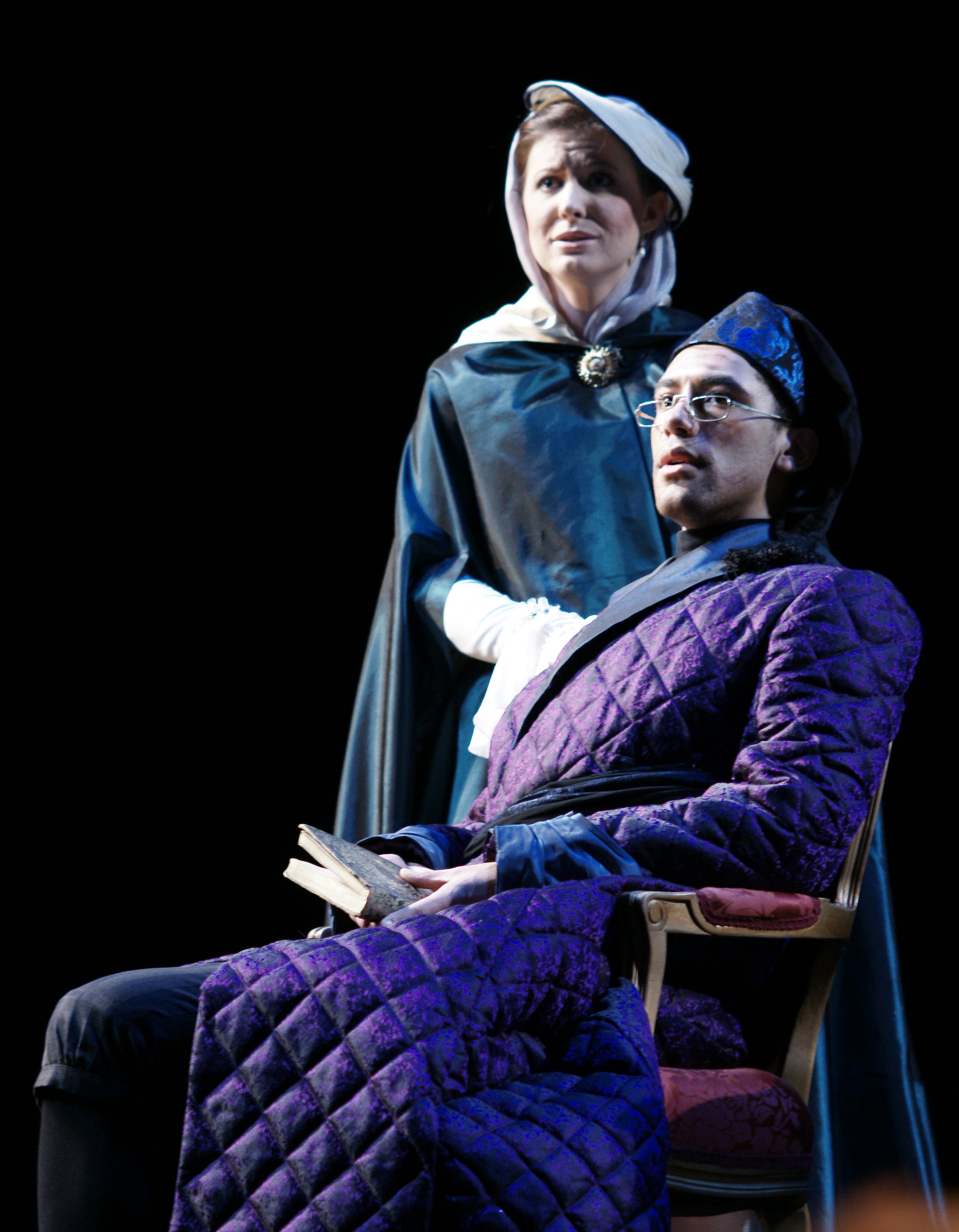UCLA to put on French opera ‘Dialogues of the Carmelites’ at Schoenberg

Graduate music students Krystle Casey and Nick LaGesse perform “Dialogues of the Carmelites,” an opera based on the faithful sacrifice of nuns.
Courtesy of Henry Lim
By Shannon Cosgrove
Feb. 17, 2011 11:55 p.m.
On July 17, 1794, 16 Carmelite nuns paid the ultimate price for their faith during the Reign of Terror. A century and a half later, Francis Poulenc wrote his opera “Dialogues of the Carmelites” based on these events.
A new production of the opera opens in Schoenberg Hall tonight at 8, put on by UCLA’s Department of Music.
“The opera is not just about one girl at one time, this is a story about an issue we all have to deal with in our lives. It is a story of faith, power, fear and human beings dealing with these issues,” said UCLA professor and opera director Peter Kazaras.
Kazaras first saw the opera in 1977 at the Metropolitan Opera in New York, and its emotion left a lasting impression on him.
“The last scene is one of the most shattering in all of opera,” Kazaras said. “It is simple, inexorable, sad and unbelievably daring.”
Conor Hanratty is the assistant director and a graduate student in directing from the UCLA School of Theater, Film and Television. As the nephew and godson of a Carmelite nun himself, Hanratty brings a pertinent perspective to the production.
“The scenic design is sparse, and there are minimal movements onstage, so that when something does happen, it’s very expressive,” Hanratty said.
Graduate music student and soprano Lisa Hendrickson, who will be singing the lead role of Blanche de la Force, said it is difficult to portray the grace and composure of a nun onstage ““ especially when faced with terrorizing guards.
The movements may be minimal, but the text used in opera, the libretto, is unusually deep in philosophical questions, Hendrickson said. The nuns must overcome tormenting anguish that forces them to question their faith in God.
“Blanche is timid, but throughout the opera you see these bursts of strength, and you realize she’s not as weak as she portrays herself to be,” Hendrickson said.
While focusing on Blanche’s story, the opera contains a handful of equally important characters; the performers who play these characters work together about 40 hours per week to produce the opera.
“As a director I define the page, they draw upon it,” Kazaras said. “It’s hard work, but the result can be stunning in a visceral way.”
While maintaining a professional caliber, the performers and crew sustain a healthy sense of humor that is important when working on such a somber piece, Hanratty said.
This production welcomes a collaboration between UCLA’s Department of Music and the School of Theater, Film and Television. Though Professor Neal Stulberg will be conducting the orchestra at the performance, in rehearsals, graduate music student Christopher Lade represents all the musical parts on piano. Lade said Poulenc’s score is sometimes at odds with the plot of the opera, as horrifying scenes are accompanied by beautiful music.
“The orchestration swirls around and can change on a dime; it’s always slithering around,” Lade said. “The music is very French: direct but ambiguous at the same time. It’s like a musical puzzle.”
The orchestra also provides emotional undertones to the opera’s actions, making it like another character onstage, Hendrickson said.
While the opera will look like a period production and will be sung in the original French, it will be modified with the addition of asymmetry in some of the costumes and sets, Kazaras said.
These imbalances portray a constant yearning for resolution that is consistent with the opera’s themes.
“It deals with the existential question of “˜if we die, what are we doing here in the first place? How do we live our lives?'” Kazaras said.
Though the opera deals with universal themes, it also contains concepts that modern American audiences might not be as familiar with, such as the abandonment of material possessions for faith in God.
“Taking a strong stand in what you believe in is not something that happens very much in today’s society,” Lade said. “These nuns could choose to save themselves, but they don’t. This powerful message can be adapted into our own culture.”


